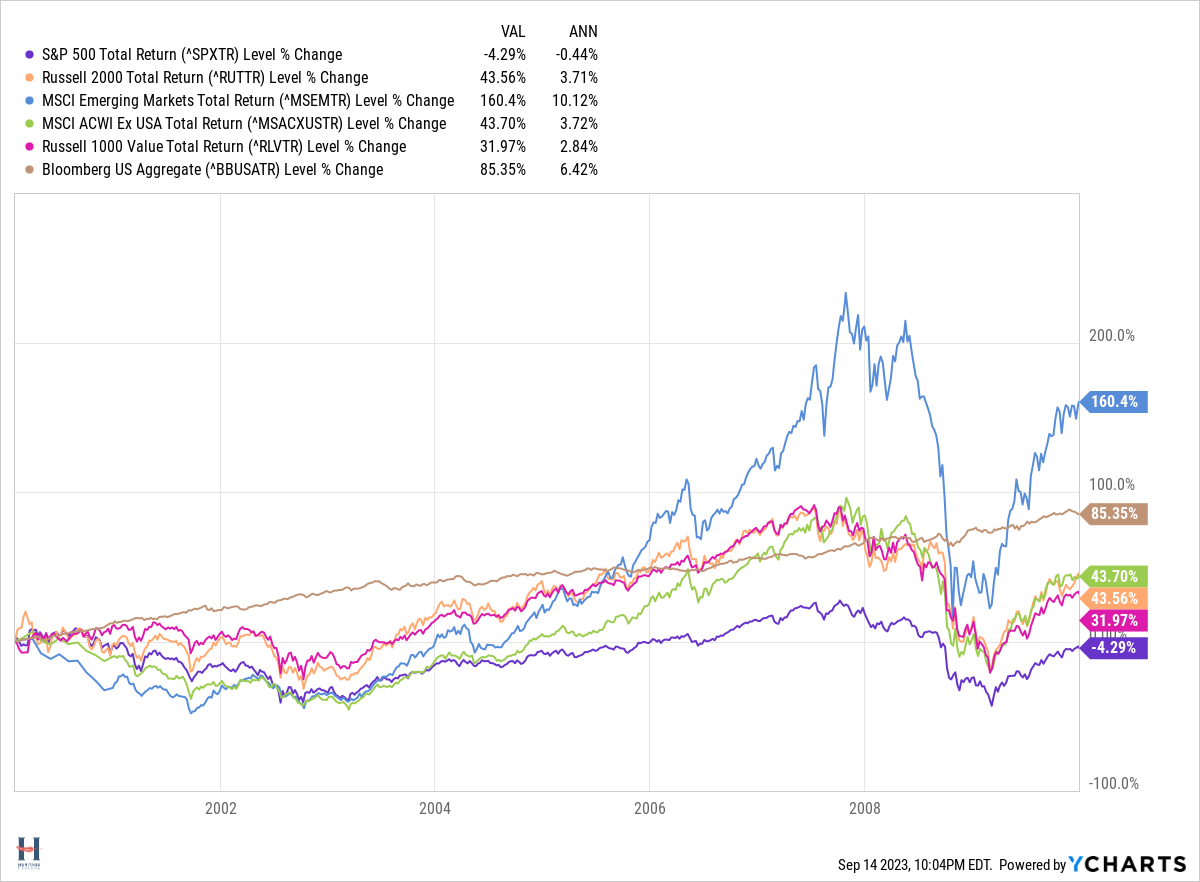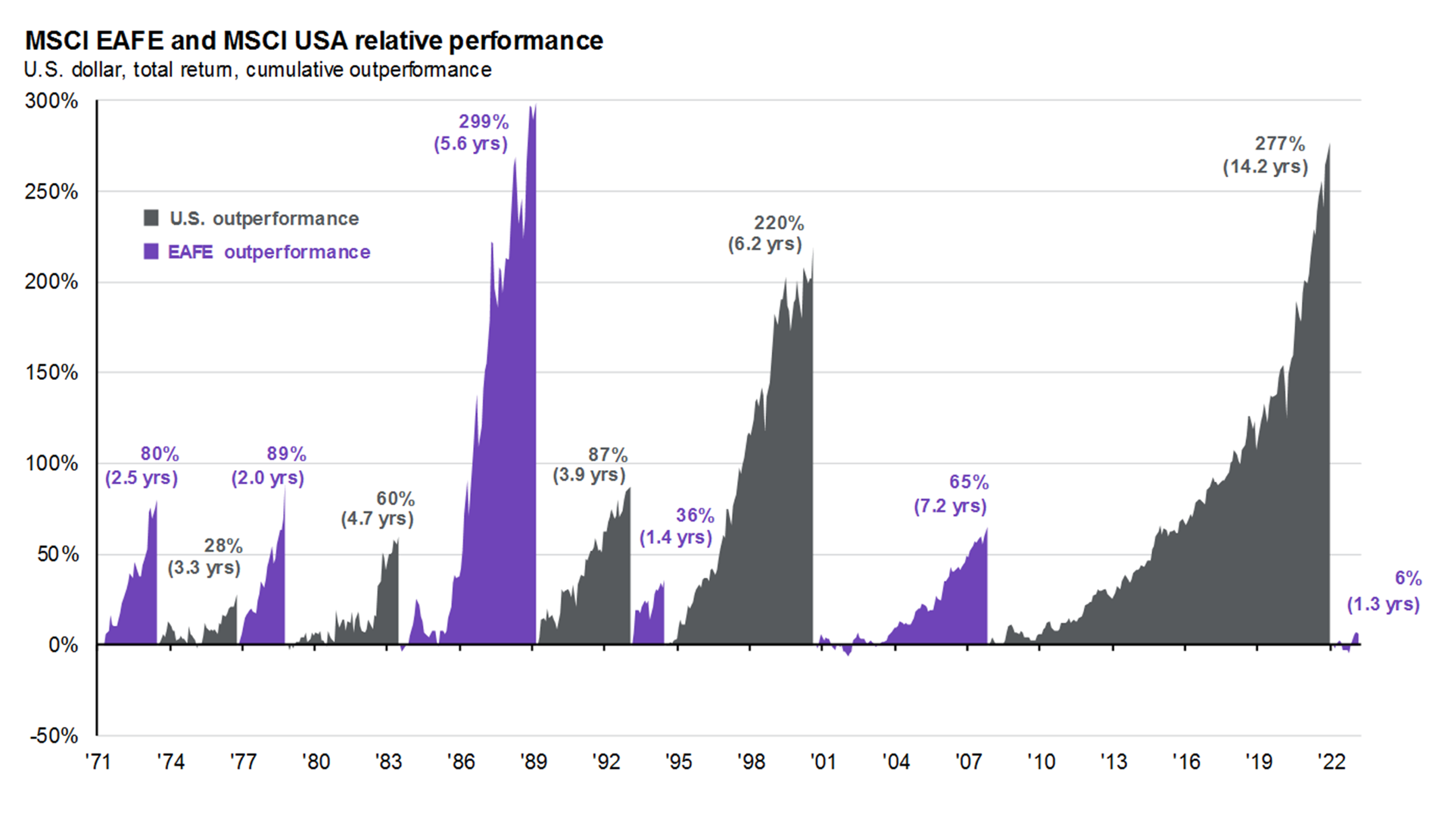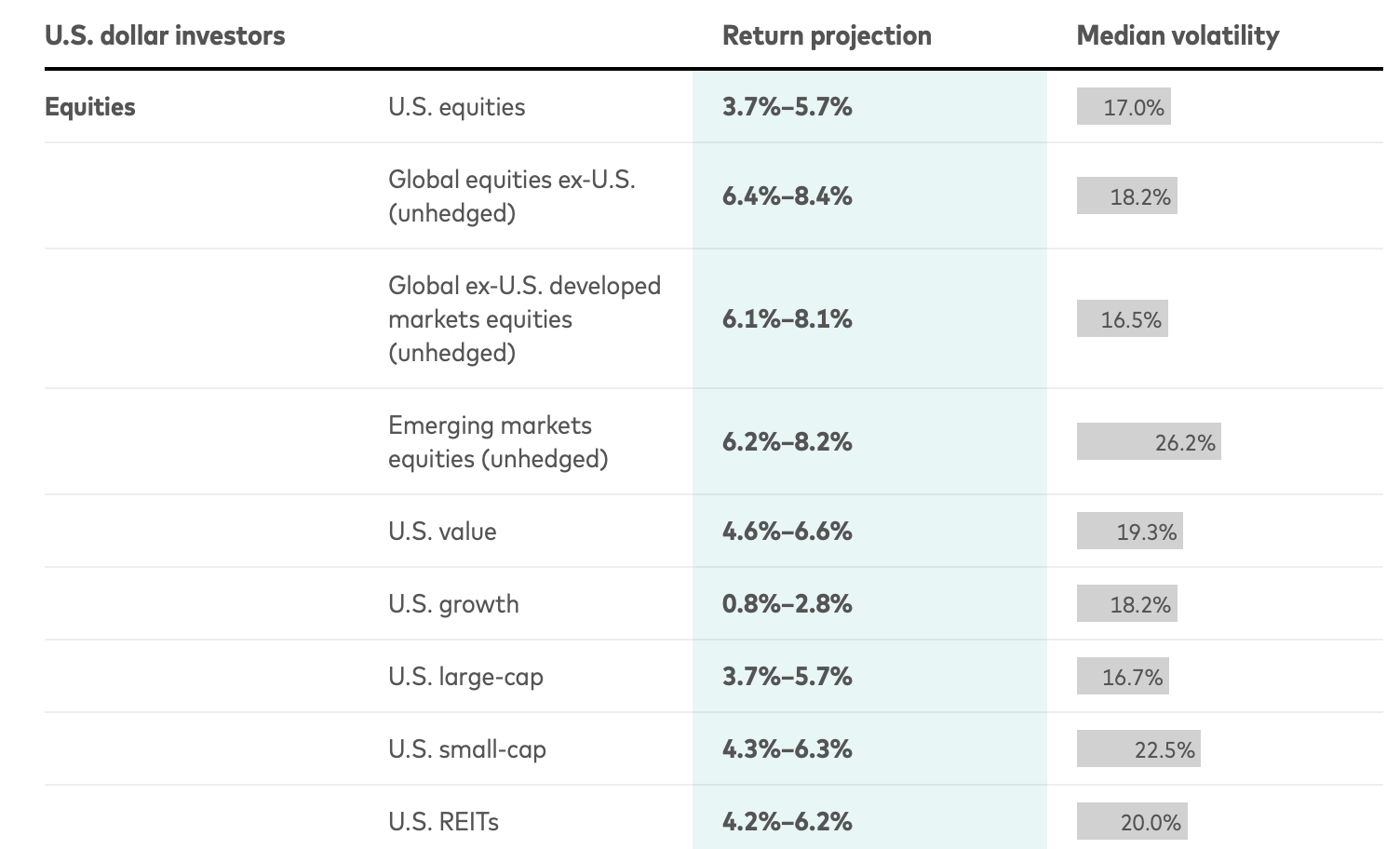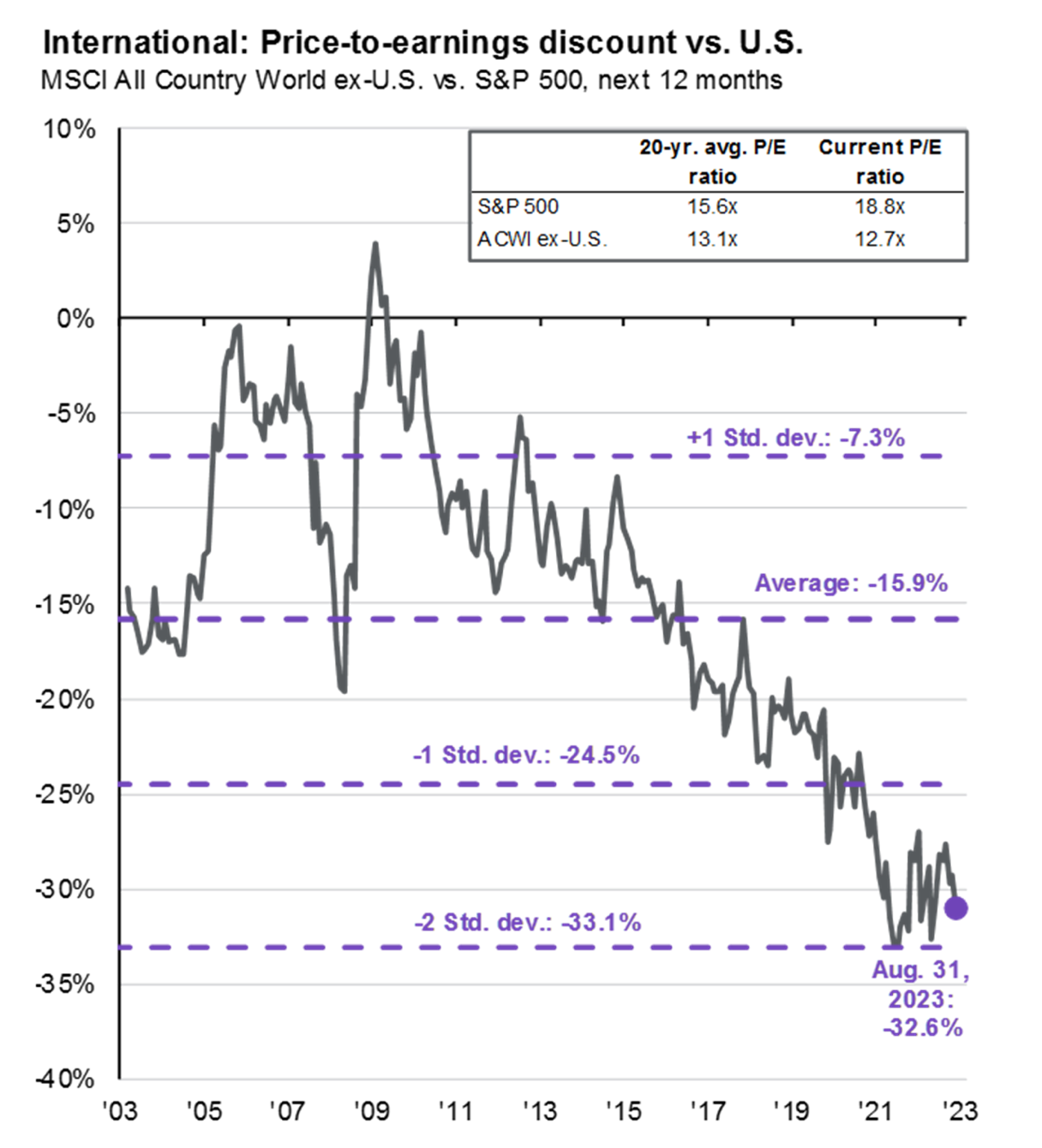Vanguard Makes a Call on Value and International Stocks
Finding investments that perform better than the S&P 500 has been hard lately. It’s left individual investors with the mistaken impression it’s the only thing worth investing in.
However, that index lost money over an entire decade (2000-2009), while many other investments did well. In order below: U.S. small caps, emerging markets, international stocks, U.S. value, and U.S. bonds all had positive returns during the “lost decade”.

It also ignores the outperformance opportunities provided by international stocks.

Source: JPM Guide to the Markets
Loading up on the S&P 500 and expecting its outperformance to continue may be a mistake, and no less than Vanguard (the S&P 500 index’s number one fan) would agree. Its recent outlook calls for value stocks and international stocks to outperform over the next decade.
The Outlook
Vanguard’s updated ten-year outlook for financial markets has international stocks outpacing the U.S., and U.S. value doing better than U.S. growth.

Source: Vanguard Investment Strategy Group
The case for international investing rests mostly on valuation differences between the U.S. and international markets and expected mean reversion.

Source: JPM Guide to the Markets
Vanguard’s strongest reason for higher expected value stock returns is because
Investors in aggregate are very enthusiastic about growth stocks – notably, technology shares – and seem to have limited interest in value stocks, including financial, industrial, and health care companies.
Vanguard: Valuations, economy may favor value stocks
This leaves value stocks undervalued, causing them to forecast a 3.8% annualized return advantage for them over growth.
Portfolio Construction
International stocks
A global stock portfolio is about 60% US and 40% international. That’s a good starting point for you.
Why not more?
International stocks are more volatile and carry risks U.S. stocks do not, so your main goal should be getting appropriate exposure without over-concentrating.
Your international allocation should be mostly developed markets, but you should have some emerging markets as well. Loose guidelines (not investment recs), are maybe 25-30% developed and 10-15% emerging markets. Specific investment ideas are beyond this post, but here’s a good resource as you consider active or passive investments, and here’s a link to Morningstar’s investment research.
Value stocks
Without knowing your starting point, it’s tough to be specific about how to add value to your portfolio. Let’s use the S&P 500 index as a reference point. It’s 40% growth and 23% value. You’re looking for more value than this, and I’d also consider investing in small cap value, which has historically done well.
You can add this via index funds and ETF’s targeting value, active value managers with good long-term track records and processes, or factor-based managers who go beyond index replication. Morningstar has tools to see what your portfolio split is now, and you can use the same link above to research investment ideas.
Dive Deeper
September Market Update: A Look Back & A Look Ahead
Fleeting opportunities: Two Things to do in Your Portfolio Now
